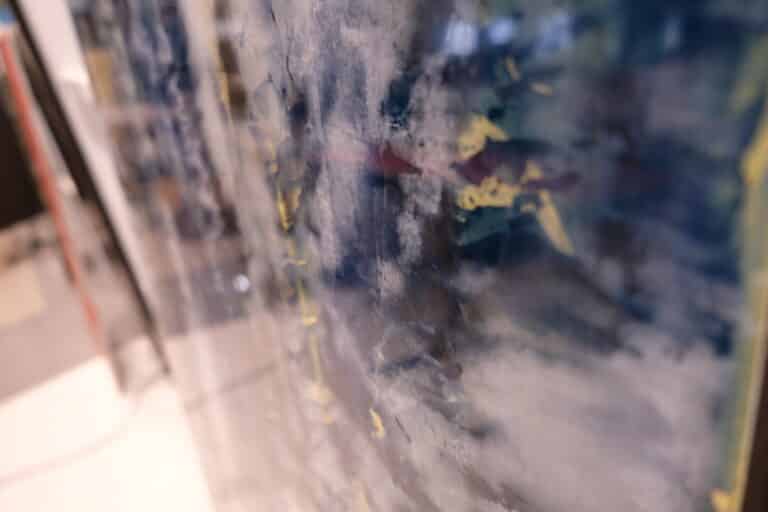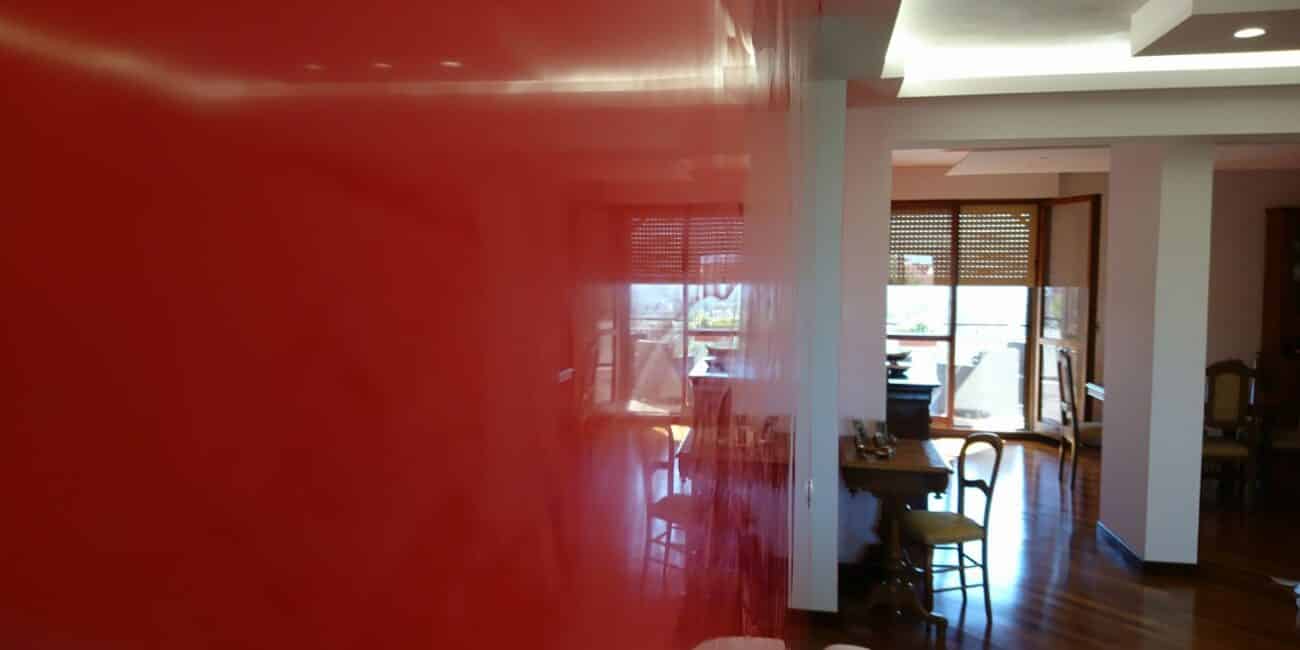
What Is Venetian Plaster?

What is Venetian Plaster?
Venetian plaster has many names, a few include the following – marble plaster, stucco plaster, polished plaster, and marmorino . These finishes date back over five thousand years ago and believe it or not starts in the ocean!
When marine life died the remains rested at the bottom of the seabed, and over thousands of years, together with heat and changes in the atmosphere, they formed rock what we call limestone or calcium carbonate (as its other term), which was then used (with the use of heat) to create a lime putty. This is Venetian plaster we know today and use.
Archaeologists have found sites that used Venetian plaster as far back as the 1st century AD in Mesopotamia (known to us now as the middle east) including turkey, Ian and Iraq. Also on the small island of Malta situated in Europe it is known that this island had the most man-made structures in the world and venetian plaster played a big part in creating them.
Another place where venetian plaster was popular was the Roman empire as they loved to imitate natural stone in big building’s such as cathedrals and villas.
Venetian plaster had a revamp in the mid 1900’s with the help of an architect from Italy called Carlo Scarpa, he started to use venetian plaster in his design’s and also started to experiment by changing the application so making it easier to apply and only using 3 coats instead of 7 saving a lot of time.
He also experimented with the use of acylic resins and colour and this can be seen in his design in the Banca populare di verona, which is situated in verona, Italy. Unfortunately he did not get chance to finish the building before his death and Arrigo Rudi supervised the completion, this is who Carlo Scrapa collaborated with on the design.
What is the Difference between Plaster & Venetian Plaster?
Typically plaster in the UK is made out of Gypsum or Lime powder form and mixed with sand. You then have to mix yourself using water and a mixer, Our venetian plaster comes ready to use, it is mixed with special ingredients depending on the product you are using, for a Venetian polished plaster product (our version is called Riflesso) this will include marble dust which helps to create the mirror shine.
Venetian plaster has so many terms – polished plaster, marble plaster, stucco, marmorino we can see why it is so daunting when you start delving into these finishes. But when you come on a course and you start to use the products (like anything) it starts to make sense, a great positive we stand by is we are on hand to answer any of your questions after you have been on a course, whether it be about venetian plaster products, how to price jobs, etc.
Also there is waterproof Venetian plaster products on the market too which are made from acrylic like our plasma 3D range, this gives a natural waterproof quality and great to be used in showers Splashback‚ as well as floors.
As with lime-based products like our Volare (medium marmorino ) and infinito (textured marmorino) you can also apply these in bathrooms as they are a breathable product and help regulate humidity and are naturally antibacterial, but we only recommend using lime-based products if they are in a well-ventilated room and only when using the correct sealers.
You can use a waterproof sealer on top if you do wish to use these product’s but it will change the appearance of the Venetian plaster and plus when there is waterproof products on the market that are designed for areas with water why chose something else?
with such a variety of finishes Venetian plaster compared to traditional plaster offers so much more, you can add pigment, colour washes and metallic waxes to name a few and once Venetian plaster has been applied you do not need to paint the wall again (only if you get bored though!)
What is Venetian Plaster made out of?
Venetian plaster is made from lime putty, which was made from limestone, the process to create lime putty is heating up the limestone in large furnaces and melted down, then it is mixed with water to make the putty. Once it is applied to the walls and dries it becomes as hard as before it was melted down taking on the form of the limestone again.
Using lime putty it makes it naturally eco friendly, hypoallergenic and mould resistant! Which is a winner all round for using in buildings and homes.
There are other ingredients (aggregates) that are added to the lime putty depending on the product you chose.
A lot of Venetian plaster (polished plaster, marble plaster or grassello which is another term used) use aggregates like marble dust to help create the shine that is such a popular finish with the Uk at the moment, you can achieve this finish with our riflesso polished plaster. Usually polished plaster has around 40% added marble dust to the lime putty to enhance the shine.
How do You apply Venetian Plaster?
You apply Venetian plaster using a trowel that is free from rust (very important! As this will ruin your finish) and is specially designed for use with these decorative finishes, it is then applied in very thin coats no more than 1mm to 3mm.
We have a full range of Marmorino Tools which are renowned for making the best trowels and tools for use with Venetian plaster-like marmorino’s (fine, medium and coarse) as well as microcement, acrylic products etc.
These venetian plaster trowels like Marmorino Tools Elite pro have a round bevelled edge which is important to be able to create a smooth flow when applying your product and will not scratch the application especially the finishing coat.
A lot of applicators make sure they have a trowel for applying and a trowel for the finishing coat. The finishing trowel for polished plasters (like our riflesso) is always keep prestine making sure all sides are smooth with no imperfections as this will scratch and damage your finish.
All Marmorino Tools Trowels come with edge protectors to stop this from happening but if you do notice a dint it is easy to rectify with sand paper, always good to have wet and dry 1200 grit handy for this.
Generally venetian plaster or marble plaster trowels are a lot smaller in thickness and length of the blade than normal plastering trowels. They usually start from 200mm and the biggest is 280mm (microcment trowels go to 405mm)
When applying venetian plaster on a large wall always good to have 280mm for this but on the final polished coat we always recommend 200mm as this gives the applicator more pressure to apply with and creating the shine.
Here at Italiano Stucco we are the Uk sole distributors and offer 10% off all tools when you attend one of our Venetian plaster training courses, you can also buy from our online shop also.
Typically the application process is between 2 to 3 coats depending on the product and the finish you are creating. Our Venetian polished plaster is called Riflesso and the application process is 3 thin coats.
Is Venetian plaster hard to do?
Like most things want you put in, is what you get out of it, and that is exactly right with Venetian plaster!
We have a lot of people from all different careers, a lot do come from the building trade/ plasterers/ painters etc, when they come on a course they do think it is going to be like plastering‚ they soon realise it is a completely different technique, as with normal plastering you are applying to a full wall in a thick coat,
With venetian plaster you are applying in very thin coats (depending on the finish) and in small movements to create movement and texture but keeping it smooth and even throughout. This will take time to master and become a top applicator, but practice is key!
You cannot apply properly onto a wall/ceilings without knowing the knowledge of Venetian Plaster and when and where it can be applied, as there is a big range of venetian plaster products and not all can be applied in the same way or the same place.
For example certain products can be applied on walls, some on floors and some in wet areas so I suggest on coming on one of our courses as we are the leading provider for Venetian plaster courses in the Northwest and will explain everything you need to know from the primers, to products and sealers.
When you attend a Polished Plaster Course you will get an information pack on the products you have used on the course and how to apply them, a pricelist and also a brief product info on all the loggia product range we stock.
And don’t forget the aftercare we provide, we are here to help you to become more confident with what you have been taught, we our always here to help support you either phone, email or in person with any questions you have or any help you need.



